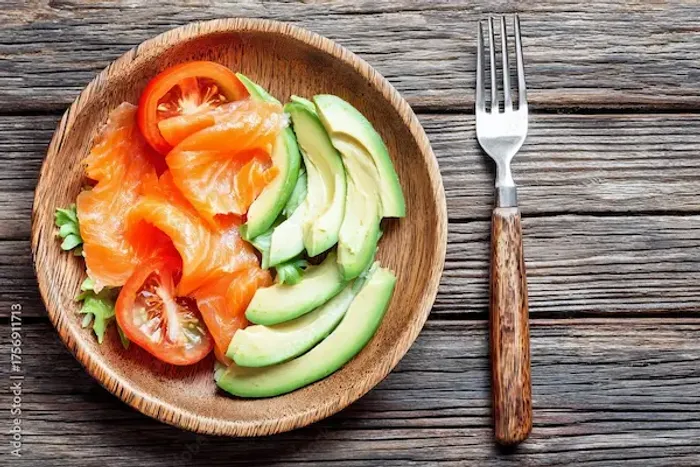Ways To Get A Fast Metabolism
Boost your metabolism the smart way with science-backed strategies. Learn how muscle, daily movement, sleep, stress, and protein influence your metabolic rate. Includes a 7-day action plan and guidance from Apollo 24|7 on when to seek medical support.

Written by Dr. Mohammed Kamran
Reviewed by Dr. Shaik Abdul Kalam MD (Physician)
Last updated on 30th Oct, 2025

Introduction
If you’ve ever wished for a fast metabolism, you’re not alone. The good news: while genetics and age play a role, many of the strongest levers are in your hands. In this guide, you’ll learn what metabolism really is—and how to speed it up safely with simple, sustainable strategies. We’ll focus on the powerful combination of strength training, daily movement, sleep, stress control, and protein-rich meals. You’ll also learn how food quality influences hunger and energy levels, and how small improvements across multiple habits can create a meaningful shift. Finally, you’ll get a practical 7-day plan and clear signs for when a medical issue—like thyroid dysfunction or sleep apnoea—may be involved. Whether your goal is easier weight management, better health markers, or more everyday energy, this science-backed blueprint will help you build a naturally faster metabolism.
Consult a Top General Practitioner for Personalised Advice
Metabolism: What “fast metabolism” really means
This section explains the foundations of how your body burns energy.
Your metabolism refers to the processes that convert food and stored nutrients into usable energy. It includes what you
burn at rest, during digestion, and while moving. Most of your calorie burn comes from essential functions like
breathing, circulation, and maintaining body temperature. Additional energy is used for movement—both structured
workouts and all the walking, standing, and fidgeting you do between them.
A “fast metabolism” means your body uses more energy around the clock. Some factors such as genetics, age, and
hormones, influence this naturally. However, key elements like muscle mass, daily movement, and food quality are
highly trainable. Unlike quick-fix hacks, these build a metabolism that stays fast long-term.
Unique insight: Think in layers—more muscle increases the energy you burn at rest, more movement boosts daily
energy use, and better food choices raise digestion-related burn. When layered together, the impact multiplies.
What you can—and can’t—change about metabolism
This section shows which metabolism factors are flexible and which aren’t.
Age, genetics, and biological sex influence your baseline. For example, many people see small changes in body
composition as they age, mostly due to reduced muscle and less movement—not because metabolism suddenly “slows
down.” Hormonal changes such as menopause can affect appetite and energy patterns, but lifestyle changes can offset
many effects.
What you can change starting today:
- Muscle: More strength means a stronger resting metabolism.
- Movement: Some people burn significantly more each day simply due to higher casual activity.
- Sleep and stress habits: These influence hormones involved in hunger, fullness, and energy balance.
- Food choices: Higher-protein, whole-food diets help protect lean mass and steady appetite.
Setting expectations: Changes to metabolism from muscle building take time. But improvements in movement and food
quality can influence calorie burn within days.
Build muscle: your 24/7 energy engine
This section focuses on strength training as the most reliable long-term lever.
Muscle requires energy to maintain. The more lean mass you have, the more energy your body burns—even while
resting. That’s why resistance training is foundational for a faster metabolism.
How to start strength training
- Train full-body 2–3 times per week.
- Target large muscle groups: legs, back, chest, shoulders, core.
- Use controlled progress: add a small increase in weight, reps, or sets over time.
Examples of moves:
- Squats, lunges
- Push-ups, chest press
- Rows, pulldowns
- Hip hinges like deadlifts
- Planks and anti-rotation core work
Pair strength training with enough protein
Eating adequate protein helps build and maintain muscle. It also takes more energy to digest protein than many other nutrients, supporting metabolism further. Spread protein out across meals, aiming for a satisfying source—like eggs, lentils, yogurt, paneer, tofu, chicken, beans, or fish—at breakfast, lunch, and dinner.
Unique insight: When you’re stronger, you naturally move more throughout the day. That effortless extra movement
becomes a major metabolism multiplier.
NEAT: The quiet calorie burner you’re overlooking
This section highlights the biggest metabolism lever most people ignore.
Non-exercise activity thermogenesis (NEAT) includes everything you do outside formal exercise: walking, errands,
chores, climbing stairs, fidgeting, and play. For many people, NEAT explains why two individuals with similar
workouts can have very different calorie needs.
Small steps that make a big difference:
- Add short “movement breaks” every hour.
- Take calls while standing or walking.
- Add short after-meal walks.
- Sit less—stand or pace for tasks when possible.
Work and home hacks:
- Park further away
- Use stairs where possible
- Keep light weights or resistance bands nearby
- Set reminders to move at regular intervals
Unique insight: Track your daily movement touchpoints—how many times you stand up and move. This metric often boosts steps automatically.
Protein and the thermic effect of food
This section explains how some foods support a faster metabolic burn.
Protein-rich foods require more energy to digest compared to fats and many highly processed carbohydrates. That
means including more high-quality protein can slightly increase energy use after meals while improving fullness.
High-protein meal inspiration:
- Breakfast: Vegetable omelette; Greek yoghurt with nuts; tofu or paneer scramble
- Lunch: Lentil bowls; chicken or bean salad; quinoa with edamame
- Dinner: Grilled fish or tofu; lean meat stir-fry; chickpea curry
- Snacks: Peanut chikki, skyr, roasted chickpeas, protein smoothie
Unique insight: Try “protein pre-loading”—have a protein snack before main meals to control hunger and support muscle recovery.
Train smart: HIIT, steady cardio, and lifting together
This section shows how workout types combine for maximum effect.
Cardio and HIIT (high-intensity interval training) burn calories and improve heart health. HIIT can create a small
temporary rise in metabolism after training. Resistance training builds the muscle that keeps metabolism elevated long-
term.
A balanced weekly training model
- 2–3 days of full-body strength training
- 1–2 days interval training (short bursts of effort)
- 1–2 days low-intensity cardio (brisk walking, cycling)
- Daily movement for NEAT
Beginners can start with brisk walking and gradually add intervals—like climbing stairs for 20–30 seconds with easy walking between efforts.
Unique insight: On days after intense exercise, schedule gentle movement like extra steps or stretching. It keeps energy burning while aiding recovery.
Sleep, circadian rhythm, and stress: the quiet regulators
This section uncovers hidden lifestyle factors that influence metabolism.
Short sleep can disrupt your hunger and fullness signals, making it easier to overeat and harder to stay active. High
stress can lead to reliance on convenience foods and reduce motivation to move.
Sleep-supporting habits:
- Keep a consistent sleep routine
- Get morning light exposure
- Reduce caffeine later in the day
- Wind down without screens before bed
Eat earlier when possible
Your body often handles meals better earlier in the day. A satisfying breakfast and lunch can support steady energy, while very late eating may reduce overnight recovery quality.
Unique insight: Treat sleep as a key part of your training plan—track it just like your steps or workouts.
Nutrition levers beyond protein
This section covers hydration, caffeine, and minimally processed foods.
Being well hydrated improves training quality and helps daily activity feel easier. Caffeine may offer a temporary
increase in alertness and energy burn for some people. Green tea and mild spices such as chilli peppers may help you
feel more satisfied with smaller portions.
Fibre-rich foods like vegetables, fruits, legumes, and whole grains help reinforce a metabolism-friendly diet by
promoting satiety, fewer cravings, and smoother digestion.
Unique insight: Try a morning routine of water + protein + fibre + a warm drink to encourage early-day movement and
energy.
Cold exposure, supplements, and metabolism myths
This section separates trends from evidence.
Cold exposure like cool showers may slightly increase energy use for some people, but the benefits are modest. Choose
it only if you enjoy it.
When supplements help:
- Protein powder can fill dietary gaps
- Creatine helps maintain muscle when paired with lifting
- Green tea extracts may offer small support to energy use
Be cautious with “fat burners” promising rapid results—they rarely address the real levers: muscle, movement, and nutrition.
Unique insight: A simple rule: if a supplement doesn’t support muscle, steps, or protein intake, it’s unlikely to help metabolism.
Medical factors: thyroid, medications, and when to seek help
This section helps you recognise when professional care is needed.
Although lifestyle habits have powerful effects, underlying medical factors may also affect metabolism. Low thyroid
function, sleep apnoea, anaemia, depression, or certain medications may influence weight or energy levels.
Seek clinical support if you notice:
- Unexplained weight changes
- Persistent fatigue or sleepiness
- Feeling unusually cold
- Noticeable changes in hair or skin
- Heavy snoring and daytime tiredness
You can discuss thyroid tests, glucose markers, or anaemia screening with a clinician. Apollo 24|7 provides online consultations and convenient home sample collection if you need help investigating symptoms.
Unique insight: Track two weeks of sleep, steps, and protein intake. Bring this to your clinician—context helps target the
right tests faster.
A 7-day action plan to kick-start metabolic momentum
This section gives you a clear roadmap for immediate results.
Day 1: Baseline
- Track steps, meals, and bedtime
- 30-minute walk after dinner
- Protein at each meal
Day 2: Strength day
- Full-body resistance workout
- Movement breaks: 2 minutes each hour
Day 3: NEAT focus
- Boost steps through errands and short walks
- Hydrating, protein-rich breakfast
Day 4: Intervals
- Short bursts of higher effort
- Night-time wind-down routine
Day 5: Strength day
- Slight weight or rep increase
- Higher-protein dinner
Day 6: Steady cardio
- 45–60 minutes easy cycling or brisk walking
- Stock up on high-protein groceries
Day 7: Recovery & reflection
- Gentle stretching or yoga
- Review weekly averages and adjust goals
Even within one week, many people feel improved energy, steadier appetite, and better sleep, which fuels even more movement.
Conclusion
Metabolism isn’t a mystery—it’s a system you can train. While genetics and age set your foundation, your most powerful levers are in your daily routines: build muscle, move more, eat higher-protein whole foods, sleep well, and manage stress. When these habits align, your metabolism becomes faster, steadier, and easier to maintain.
Start with the 7-day plan and track three metrics: daily steps, protein at meals, and total time asleep. If progress stalls despite consistent effort—or if symptoms suggest an underlying issue—speak with a doctor. If your condition does not improve, consider a check-up or online consultation with Apollo 24|7 for personalised care and metabolic health testing.
Your metabolism responds to momentum. Begin with one lever today—and watch the benefits compound.
Consult a Top General Practitioner for Personalised Advice
Consult a Top General Practitioner for Personalised Advice

Dr. Suvadeep Sen
Critical Care Specialist
12 Years • MBBS, MD, FNB (CRITICAL CARE MEDICINE), EDIC
Mumbai
Apollo Hospitals CBD Belapur, Mumbai

Dr. Mainak Baksi
General Practitioner
13 Years • MBBS , MD (MPH)
Howrah
Mainak Baksi Clinic, Howrah
(50+ Patients)

Dr. Rajib Ghose
General Physician/ Internal Medicine Specialist
25 Years • MBBS
East Midnapore
VIVEKANANDA SEBA SADAN, East Midnapore

Dr. Dixant Chhikara
General Practitioner
4 Years • MBBS
Delhi
SKYNN CARE, Delhi

Dr. Ramyajit Lahiri
General Physician/ Internal Medicine Specialist
7 Years • MBBS,MD
New Town
AESTHETICAROOTS, New Town
Consult a Top General Practitioner for Personalised Advice

Dr. Suvadeep Sen
Critical Care Specialist
12 Years • MBBS, MD, FNB (CRITICAL CARE MEDICINE), EDIC
Mumbai
Apollo Hospitals CBD Belapur, Mumbai

Dr. Mainak Baksi
General Practitioner
13 Years • MBBS , MD (MPH)
Howrah
Mainak Baksi Clinic, Howrah
(50+ Patients)

Dr. Rajib Ghose
General Physician/ Internal Medicine Specialist
25 Years • MBBS
East Midnapore
VIVEKANANDA SEBA SADAN, East Midnapore

Dr. Dixant Chhikara
General Practitioner
4 Years • MBBS
Delhi
SKYNN CARE, Delhi

Dr. Ramyajit Lahiri
General Physician/ Internal Medicine Specialist
7 Years • MBBS,MD
New Town
AESTHETICAROOTS, New Town
Frequently Asked Questions
1) Does eating every 2–3 hours boost metabolism?
Not by itself. Meal frequency has little effect on total daily energy expenditure when calories and protein are matched. Focus on total protein and whole‑food quality to increase basal metabolic rate via muscle and TEF.
2) What are the best foods to boost metabolism?
Protein‑rich foods (eggs, fish, lentils, Greek yoghurt, tofu) have a higher thermic effect. Pair them with high-fibre vegetables, legumes, and whole grains to support satiety and NEAT. Green tea and spicy foods may offer small, short‑term boosts.
3) How much can HIIT increase my metabolism?
HIIT increases calorie burn during the workout and produces a small afterburn (EPOC) for hours, but it’s not massive per session. The bigger long‑term impact comes from fitness gains that let you move more overall and train consistently.
4) I’m over 40; is a fast metabolism still possible?
Yes. Resistance training, adequate protein, and daily NEAT can offset age‑related muscle loss and keep your metabolism robust. Sleep and stress management become even more important for metabolic flexibility].
5) When should I consider medical testing?
If you have unexplained weight change, persistent fatigue, cold intolerance, or mood/skin/hair changes, discuss thyroid (TSH), anaemia (CBC/ferritin), and glucose (HbA1c) with a clinician. If symptoms persist beyond two weeks, consult a doctor online with Apollo 24|7 for further evaluation.